Copyright 2020 - 2021 irantour.tours all right reserved
Designed by Behsazanhost
Architectural and Natural Attractions of Yazd
Architectural and Natural Attractions of Yazd
Yazd is one of the most attractive and beautiful desert cities in Iran. A collection of the most beautiful and dazzling effects of architecture - history - culture and art - and nature has made this city the most attractive desert city in Iran. As you walk through the narrow alleys of the city, the long shadows of the clay walls intoxicate you with the scent of spring flowers. Traditional buildings decorated with a variety of colorful and beautiful tiles will take you to the depths of the history and culture of the desert people. The cool water of the current Qanats throughout the city will quench any thirst.
Here we introduce a part of the beauties of Yazd city.
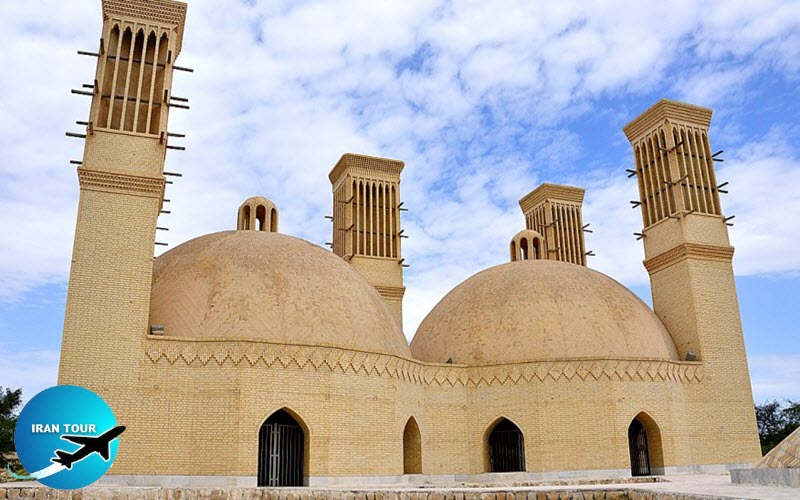 |
Water Reservoir
There exist over one hundred water reservoirs in Yazd, they are made out of brick and a very important material called "Dime" which is a blend of lime, ash, and quicksand. Not only does (Dime)function as a resist but it also hinders water from going off. Water reservoirs consist of 4 major parts:
Tank: It is a cylindrical water hole that was dug in the depth of ground and the water extending from Qanat dominated it. In a special way, water was directed to the tank and stored there.
Dome: A hemisphere-shaped ceiling was constructed over the tank to keep the water clean and cool.
Landing: A stair corridor was constructed to put the water within access with regard to the architectural style of the time.
Windcatcher: A multi-sided cylindrical structure was built to let the air circulate through the water reservoir, keeping the water drinkable,
The number of wind catchers ranged from one to seven. draws on the change in temperature, and their functions. For instance, the water reservoir in Maryam Abad with one wind catcher, the water reservoir in Asr Abad with seven wind catchers, and the Shesh-Badgiri water reservoir in Yazd with 6 wind catchers are major attractions.
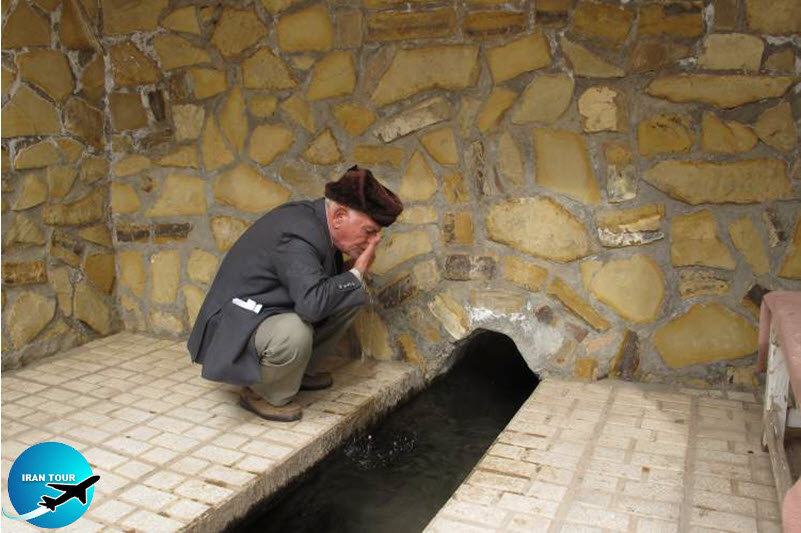 |
Underground Water (Qanat)
The low annual precipitation in Yazd province (60 millimeters up to 100 millimeters)has caused to create of an interactive way to save water. The underground water tunnels or Qanat stretch across the Yazd and Ardakan plains, ranging from southern Fahraj to northern Ardakan and supplying Yazd, Sadouq, Meybod, Ardakan, and surrounding areas with drinking water as well as water for agricultural and industrial purposes. The exploitation of the underground water is usually made through qanat, which measure 2663.4km in length. The largest number of qanats are situated in Taft, measuring 924.6km in length. The 900-year-old qanat, named Yaqoubi, is the ancient one which is situated in the city of Yazd. They are the major qanats in Yazd province: Aharestan, Dolat Abad, Qias Abad, and Zarch.
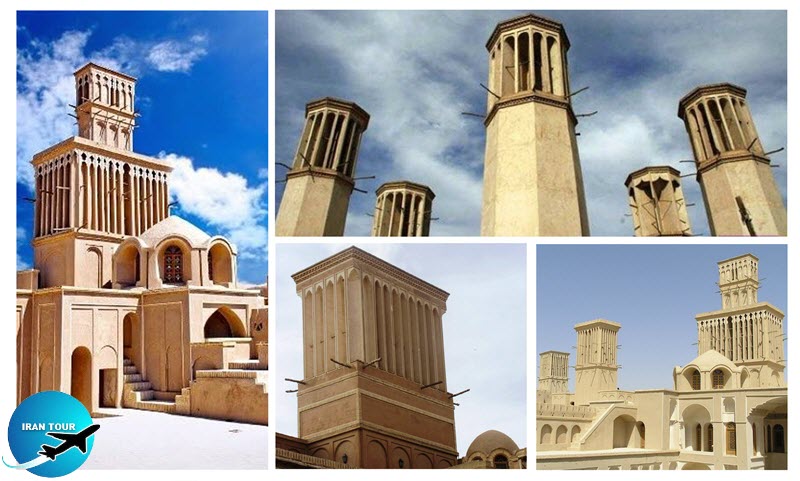 |
Wind Catcher
Wind catchers make the scenic city of Yazd full of charm and beauty, wind catchers offer a sense of timeless beauty and at the same time they play a key role in making the interior spaces, cellars, and water reservoirs cool. The soaring towers lead the favorable weather to the lower parts of the house. Through the air outlet, the fresh air rushes into the rooms and through the air inlet the dirty hot air rushes out. The people used to utilize the wind catchers to keep the foodstuff cool. The world-famous Dolat Abad windcatcher (Dolat Abad Garden) measures 33/8 meters in height, majestically dominating the scenic garden.
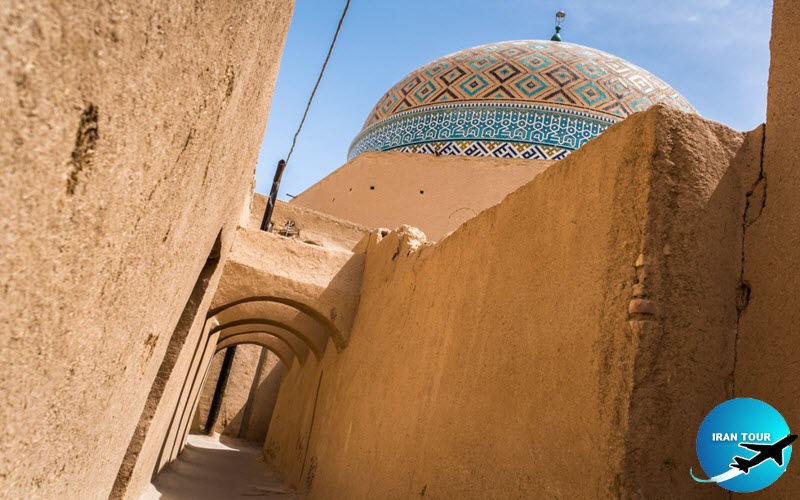 |
The narrow alleys (Conciliatory alleys)
The old context of the city with its own appeal is renowned for its winding alleys which are too narrow for two people to get through easily. It's related that 2 people not on speaking terms met each other face to face in such an alley, they got stuck with each other in a way that they both burst into laughter, being reconciled with each other in a very funny way.
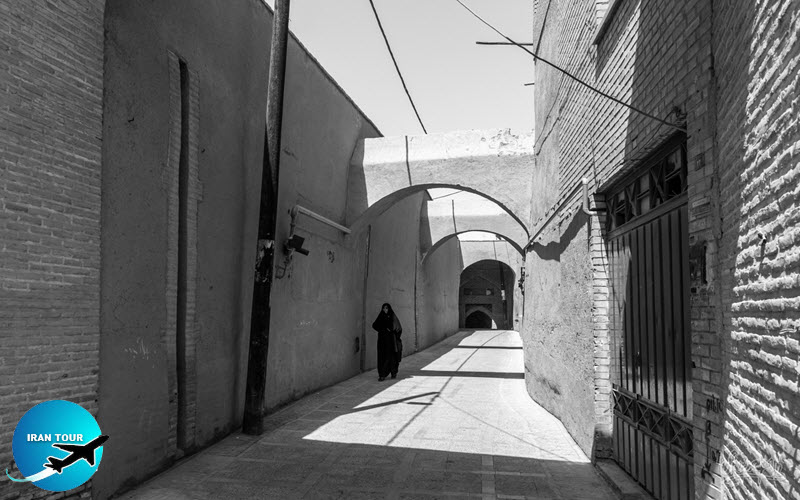 |
Archway
The word literally means a passage or an entrance under an arch. The architects of Yazd always took the requirements and climatic conditions into consideration while constructing the house. Archway is the typical architecture of the desert Kavir constructions. The heat-stricken passer-by takes refuge in the archway and cool weather refreshes him/her on way home. Archways majestically dominate the alleys full of adobe houses with their old-world charm.
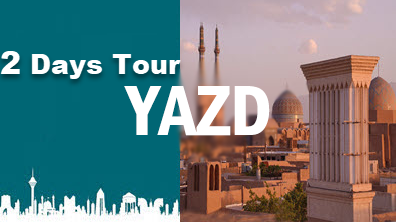 |
Mill
In the village through which the water from qanat ran, the people usually utilized the force of water to turn the stone mill. The most important part of the mill is its body which is usually constructed in the depth of the ground. The mill body with an upside-down conical shape is usually set in the depth of ground and the water stored there flows through a tiny hole, causing the mill wheel to turn. The upper and lower millstones are of igneous type, both are round, but one is fixed and the other one is movable. The wheat or barley enters the center of the mill and is pulverized there. The main space of the mill is located in the heart of the ground and only the entrance and ceiling lighting are apparently visible. However, the underground space of the Mill boasts a special architectural character. The water mill located in Ashkеzar offers unique architecture and a spectacular view. The Sang-e Siah (black stone), Taft, Eslami-ye and Bafrouiye mills are the major attractions, offering splendid scenery! each.
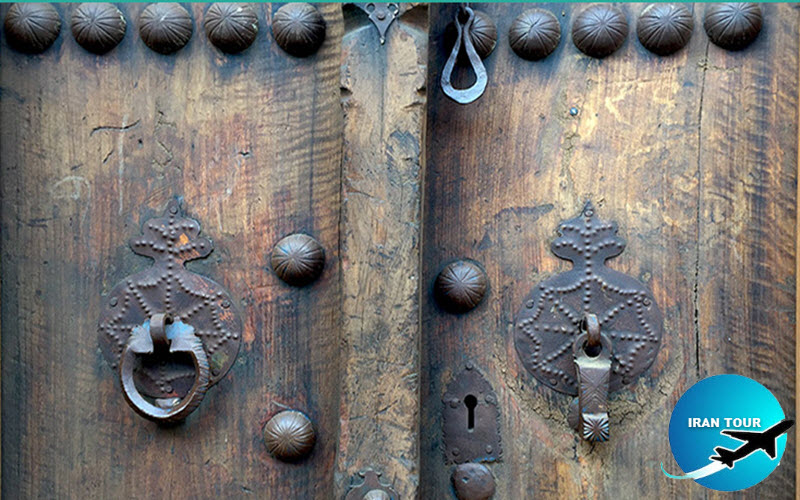 |
Knocker and Closing Ring
They are special metal tools used to inform the residents of the house of the people behind the door. They were first made out of iron, later on out of brass. It should be noticed that the sound echoed the ring and knocker differed from each other in a way that they made it easy for the residents to recognize the identity of the person behind the door, the man always used the knocker to make the louder sound, while the woman used the closing ring to make the weaker sound.
They are the most picturesque knockers and closing rings with intricate patterns:
1) The closing ring and knocker of Mr. Mahmoud Mashrote's house-made in 1268 A.H., bearing lines of poems in Ettefaq Alley (in Pir-e Borj neighborhood).
2) The closing ring and knocker of Dr. Mehdi Dashti's house-made in 1294A.H., in an alley next to the Gole-e Meshki Bathroom in Salman-e Farsi Street.
3) The closing ring and knocker of Mr. Zia-e Taghavi's house around Amir Chaqmaq Square.
4) The closing ring and knocker of Mr. Shafi-Pour's house near the Tabrizian Mosque in Qiam Street.
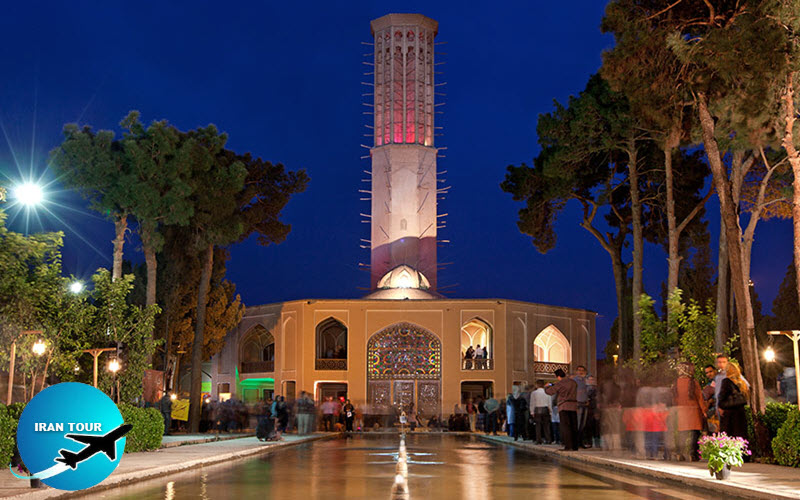 |
Gardens
Although Yazd is located in the heart of the desert, short of water and plant life, it is really renowned for its lush gardens full of green carpet vistas. All evoke the imaginative nature of the thrifty people who persevered in their effort to bring life and vivacity to their hometown. The system of irrigation has been consistently taken into consideration. They are some of the charming gardens: Dolat Abad, Khan, Kolah Farangi (in Rahmat Abad), Pahlavan-Pour (in Mehriz), Morshed, Sadri (in Taft), Mahmoudi-ye, and Dr.Olia.
 |
The Protected Areas
When nature is not very generous with the land, a man does his best to create beauty out of the desert where the water is the rarest thing. When the green carpet stretches across the desert, the man tries to keep it intact, the existence of the protected area evokes the persevering nature of the man living in the desert, a man who is always eco-friendly. Yazd province boasts some protected areas which house some prominent national information centers. Yazd abounds with some protected areas like Bahadoran, Kalmand, and some no-hunting zones like Darr-e Anjir, Ariz, and Bajegan. The Bahadoran and Darr-e Anjir protected areas are internationally focal points where some rarest species of plant life and wildlife abound.
The chain of mountains stretching across Bafq and Darr-e Anjir is home to the rarest wildlife in the world like the endangered species of Asian cheetah. Every year a flock of hunters with shooting licenses from all over the world take a trip to the protected area in the vicinity of Bafq, hunting wild goats and wild sheep.
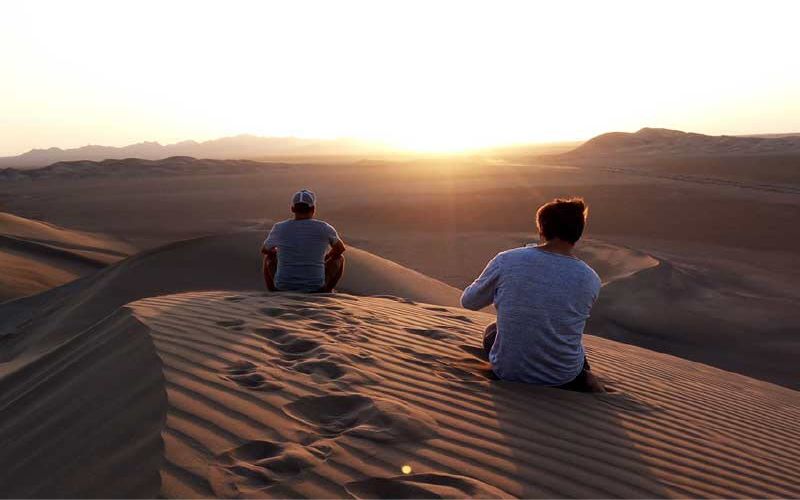 |
The desert or Kavir
Yazd with a mix of the desert in its pristine condition and panorama of vast plantations and lush gardens on the rim of the desert is a premier attraction. The 8825-Hectar desert of Kavir-e Saghand is considered one of the world's rarest nature attractions, stretching across the northeastern part of Yazd Province, it abounds with a lot of wonders. The Siahkouh, the Abarkouh, the Zarrin, the Marvast, the Bahadoran, the Elah Abad, the Toot, the Darre Anjir, the Taghestan, and the Shahidi-ye are the most other known deserts in Yazd.
Caves
The artwork of nature is sometimes hidden, Yazd abounds with its magnificent formations under the ground. Nabati cave in Nodoushan, Eshgeft-e Yazdan cave, Mobadan-e Firooz cave, A'la cave, Chak-Chak cave, and Eslami-ye cave all decorated with stalagmite and stalactite formations are premier attractions.
Springs
The vast expanse of desert is blessed with sparkling water of springs, creating a charming view. They are some of them the Gharbal Biz spring in Mehriz, the lamehr spring in Taft, and the Masih spring in Herat.
- Details
- Category: Yazd Tourism